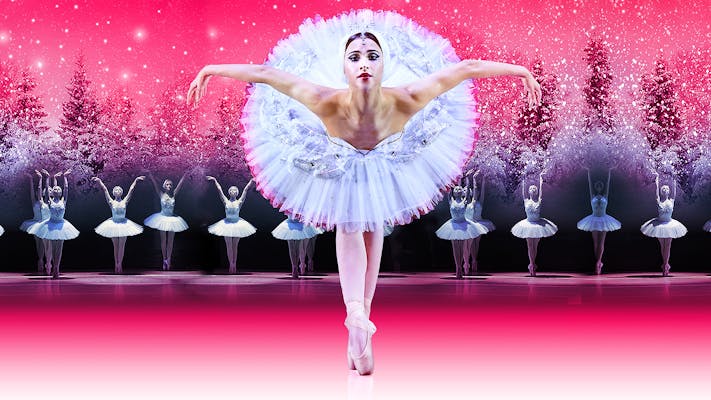The Sleeping Beauty, Tuesday 25th February 2020
In Oxford this week is the Krasnoyarsk Ballet Company, known on tour in Britain as the Russian State Ballet of Siberia. Krasnoyarsk is plumb north of Mongolia, and a halfway stop on the Trans-Siberian railway between Moscow and Vladivostok, with 4,000 kilometres to either of them by sleeper car. The travelling company are away from home from mid-December to early April with few days off en route. It's a tough schedule for these Siberians.
This was my second The Sleeping Beauty experience within a month since seeing the Moscow City Ballet at the Waterside at Aylesbury. One difference was instantly revealed with the set of noble pillars and rococo wrought-iron gates - not unlike the Trinity College pair - leading through to a grassy sward and palace beyond. This set and its successors, including a chandelier-lit interior and further exterior aspects, were back projections; detailed but a little hazy in outline, and latterly featuring a view in murky lime green and brown. The Muscovites, I think bolstered by a shower of metropolitan roubles, had travelled with huge, studiously-painted set boards, making an individual statement of artistic intent, whereas the Siberians' offering here was comparably generic.
The plot is too well known to require a summary here; suffice it to say that the production could have been followed quite easily by the many children sitting around me were they reasonably conversant with the story, and whereas the Muscovites had inexplicably omitted the suggestive moment where Prince Florimund awakes Princess Aurora with a kiss, that event was delicately rendered here.
Costumes, naturally a vital element, featured fairies in pastel colours with wings later transmogrified into courtiers in more vivid shades, while the King was resplendent in rainbow colours and a gigantic bow. The wicked, spell-casting Carabosse stood out in black and silver, with an ermine-lined scarlet cloak which he swirled about him as he whirled across the stage in a passion; a splendid effect, though possibly repetitive. I'll draw a veil over the wigs, which looked as though garnered from a nearby haystack.
The orchestra of a generous 26 players under Anatoliy Chepurnoy, happily here in full view rather than down in a pit, featured paired brass and wind instruments. It was led by the excellent first violin Lidiia Bazhanova, who delivered her solo in the Act II Entr'acte with supple ease. She and the timpanist told me how their delight in the composer and this piece for them forbids any jaded feelings of déja vu over dozens of performances. Although the Overture and opening March were truncated, the string section was strong and the harp and timpani distinctive, whereas the twin flutes were oddly strangulated.
The Sleeping Beauty in Marius Petipa's traditional choreography offers lots of scope to sub-principals in cameo rôles, notably in the divertissement section before the end where such folk tale luminaries as Little Red Riding Hood (with unfeasibly benign wolf), Puss in Boots and Cinderella's Prince Charming pop up. Some of the pairings featured dancers of substantially varying heights which was a little unfortunate, but the standard throughout was high.
Especially notable was Ivan Karnaukhov's male Bluebird, of immense energy and whose leaps seemed spring-loaded. Elena Svinko was a tall Aurora, showing off her jetés and arabesques with fine pointe work, and Marcello Pelizzoni's Prince commanded the stage with his succession of lifts in the culminating Pas de Deux. At curtain call, while his amour was all smiles and deep curtseys, he took his applause with grace and grave dignity, inclining his head only slightly. This was an artist acknowledging the significance of his work.




